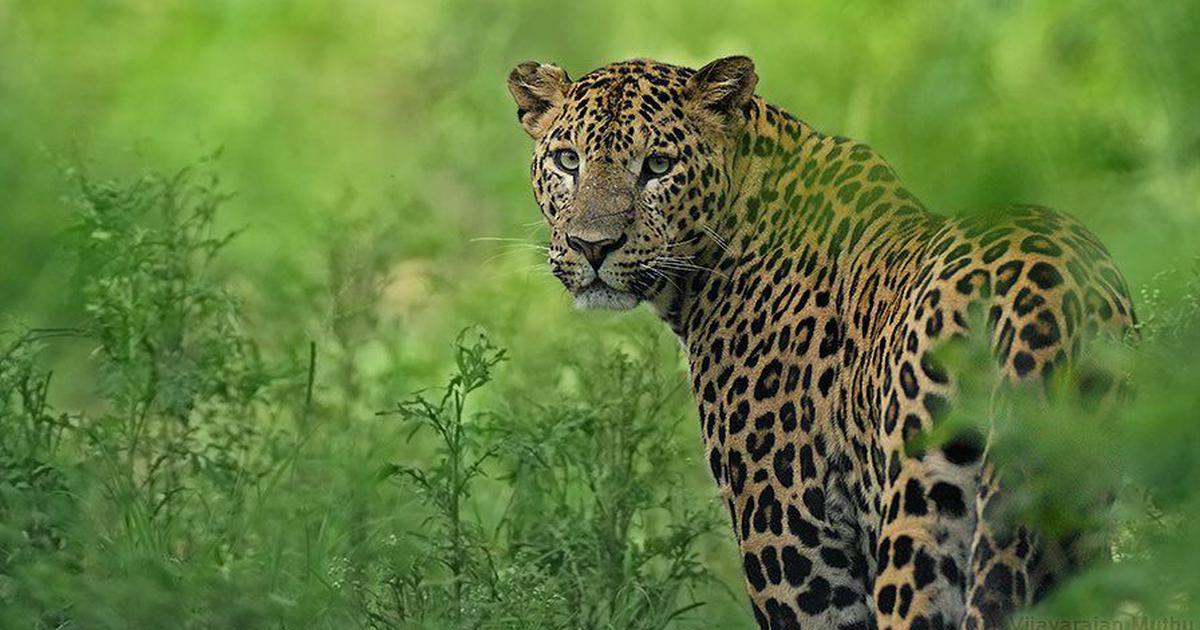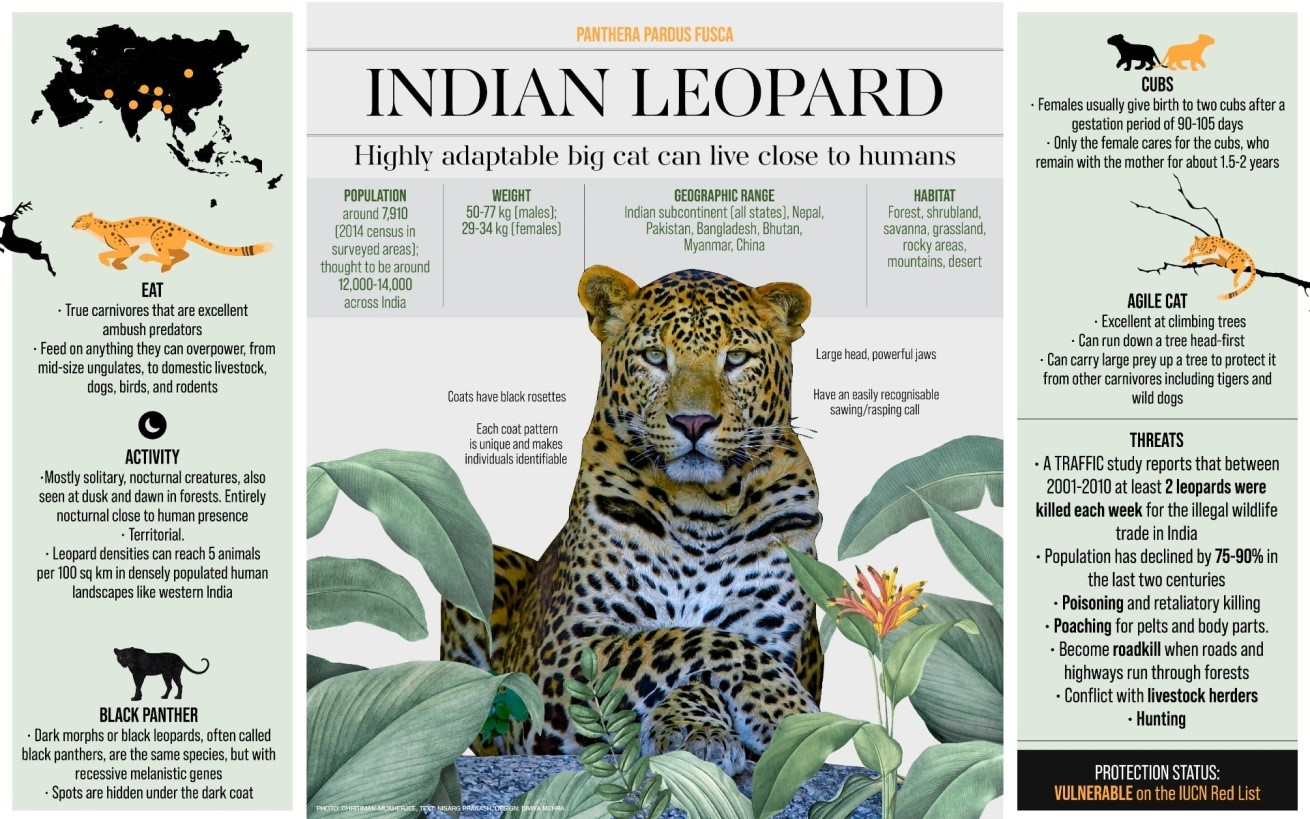





Copyright infringement not intended
Picture Courtesy: https://scroll.in/latest/981937/indias-leopard-population-rises-over-60-since-2014-to-12852-shows-government-report
Context: The National Tiger Conservation Authority and Wildlife Institute of India presented the fifth cycle leopard population estimation in India, indicating a stable leopard population of 13,874 individuals, with noteworthy variations observed across different regions of the country.
Details
Key Findings of the Report
|
Leopards in India |
|
|
Feature |
Description |
|
Subspecies |
Indian leopard (Panthera pardus fusca) |
|
Habitat |
Tropical rainforests (Western Ghats, Northeast India) Temperate deciduous forests (Central India) Alpine coniferous forests (Himalayas) Dry scrubs (Rajasthan, Gujarat) Grasslands (limited distribution) |
|
Distribution |
Found throughout mainland India, extending from: Indus River (west), Himalayas (north), Brahmaputra River (east), Excluding some parts of the Gangetic Plains and desert regions. |
|
Physical Characteristics |
Length: 112-190 cm (excluding tail) Weight: 35-77 kg Rosette coat pattern with various colour variations Powerful legs and strong body for climbing and hunting |
|
Diet |
Carnivore, preying on a variety of animals depending on habitat: Ungulates (chital, sambar, deer), Monkeys, wild boar, rodents, Birds, reptiles, fish (opportunistic) |
|
Behaviour |
Solitary animals except during mating season Nocturnal hunters, but can be active during the day Excellent climbers and swimmers Territorial, marking their range with scent markings |
|
Reproduction |
Females reach sexual maturity at 2-3 years old Gestation period: 90-100 days Litter size: 1-4 cubs Cubs become independent at 18-24 months |
|
Threats |
Poaching for skin and body parts Habitat loss due to deforestation and development Human-leopard conflict due to livestock depredation and encroachment on leopard territory |
|
IUCN Status |
The IUCN Red List classifies the leopard (Panthera pardus) as Vulnerable. |
|
Conservation Efforts |
Protected areas like national parks and wildlife sanctuaries Anti-poaching patrols and awareness campaigns Habitat restoration projects Mitigating human-leopard conflict through livestock protection measures and community outreach programs |

Must Read Articles:
International Leopard Day: https://www.iasgyan.in/daily-current-affairs/international-leopard-day#:~:text=Leopards%20are%20generally%20asocial%20animals,%27urr%2Durr%27%20sound.
|
PRACTICE QUESTION Q. What is the current conservation status of leopards in India? A) Endangered B) Critically Endangered C) Near Threatened D) Vulnerable Answer: C Explanation: Leopards in India are classified as "Near Threatened" on the International Union for Conservation of Nature (IUCN) Red List. This designation indicates that while they are not currently facing the immediate risk of extinction, their population is declining, and conservation efforts are necessary to ensure their long-term survival. |






© 2026 iasgyan. All right reserved